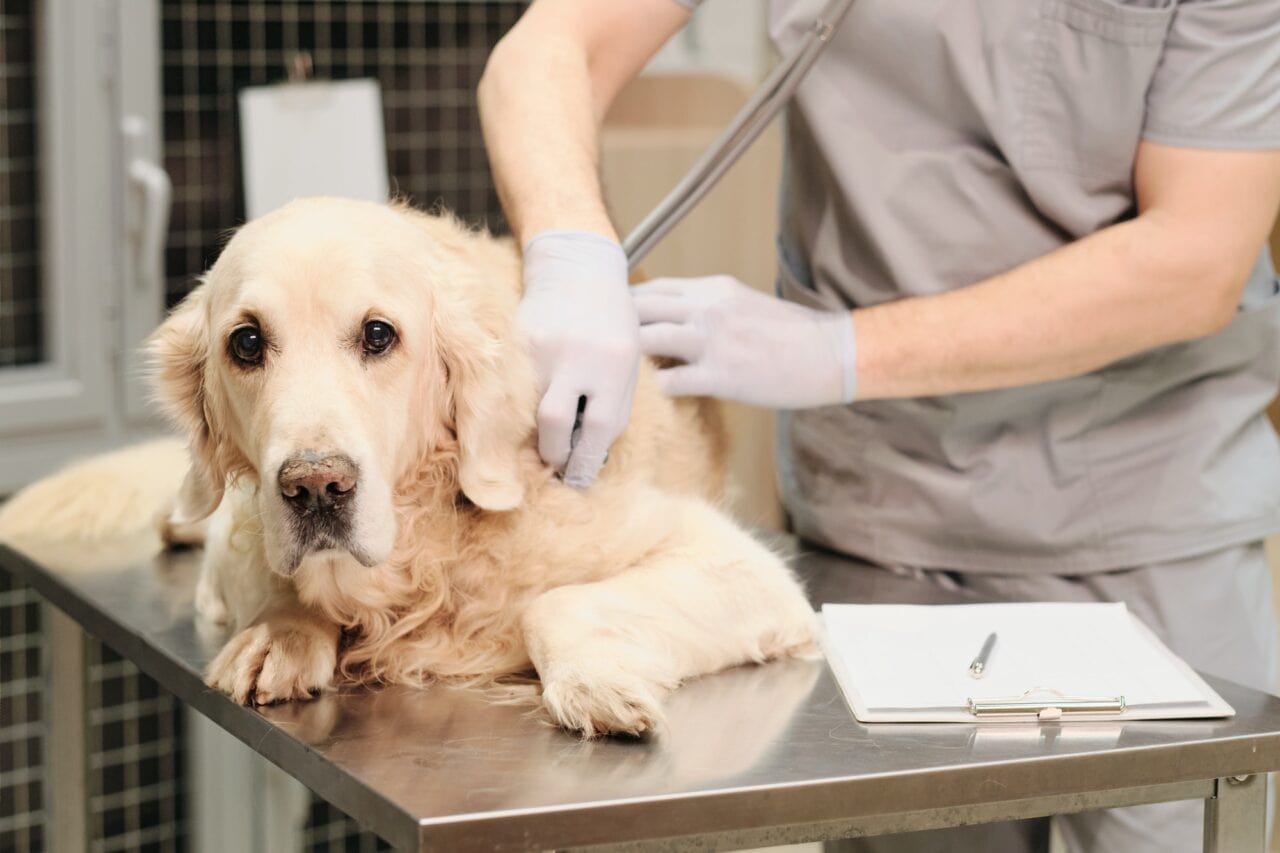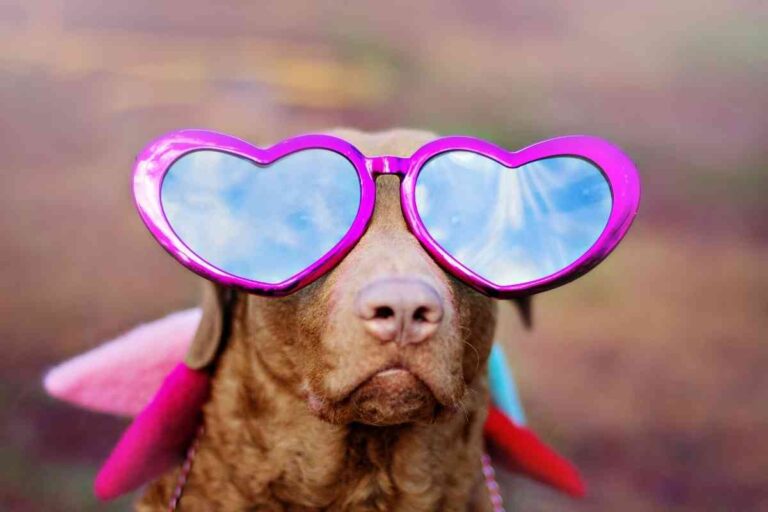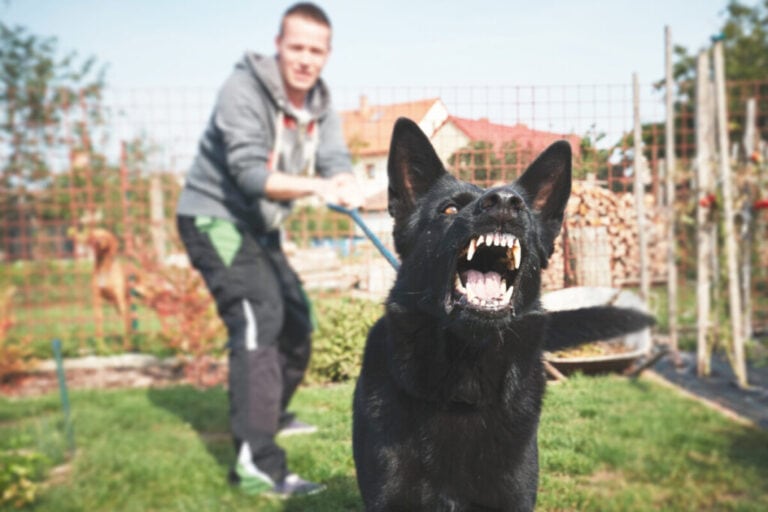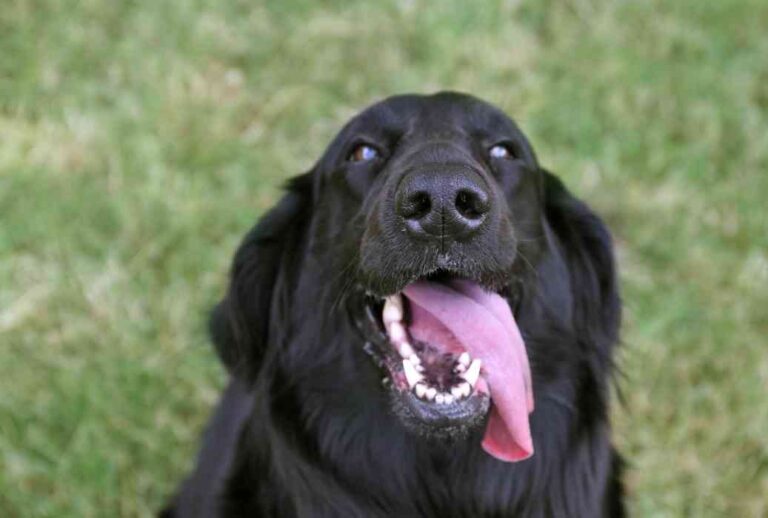How Big Can a Golden Retriever Get: Size Guide
Discover the surprising size range of Golden Retrievers, a beloved breed known for its friendly nature and impressive stature. Learn what to expect as your Golden Retriever grows into a strong and loyal companion.

Golden Retrievers typically reach a size of about 55-75 pounds in weight and 20-24 inches in height at the withers. Females are generally smaller than males. This breed is known for its well-proportioned body, with a strong and muscular build, reflecting their origins as working dogs.
Introduction to Golden Retrievers
Golden Retrievers are beloved for their friendly demeanor and luxurious golden coat. They are highly adaptable, equally at home participating in outdoor activities or relaxing with the family.
Breed Characteristics
Golden Retrievers are known for their intelligence and gentle temperament, making them excellent family pets and service animals.
Males typically weigh between 65-75 pounds and stand 23-24 inches tall, whereas females are generally lighter at 55-65 pounds with a height of 21.5-22.5 inches.
I remember my first Golden, Buddy, impressing trainers with his quick mastery of commands, a testament to the breed’s eagerness to please.

Golden Retriever Varieties
While all Golden Retrievers share core traits, there are slight differences among them, particularly between the American, Canadian, and British types.
American Golden Retrievers are often lankier with darker coats. In contrast, my Canadian Golden, Maple, has a thicker build and a lighter coat, features that often distinguish Canadian Retrievers. British Golden Retrievers are generally more muscular with even lighter coats, and broader heads.
Growth Stages of Golden Retrievers

Golden Retrievers experience several growth stages, transitioning from playful puppies to full-sized adults. Let’s dive into these stages and along the way, I’ll share some personal experiences that may give you insights into their growth and development.
Puppy to Adulthood
When my Golden Retriever was a puppy, they went through rapid growth. Generally, this period lasts up to 24 months, with the most significant changes occurring in the first six. During this phase, they will transform from small, nuzzling balls of fur into large, energetic dogs.
In my experience, feeding them a balanced diet and ensuring they have plenty of playtimes is crucial for their physical development.
You might find “Puppies First Year” by Kern Campbell and Dr. Sara Reeding Ochoa DVM for more tailored advice on raising a puppy, an informative read.
Milestones and Development
Throughout their development, Golden Retrievers hit several milestones. By the age of three months, puppies typically start to teethe, and by six months, many have reached about two-thirds of their adult weight.
It was always thrilling to see my puppy grow as I closely followed a puppy growth chart and made sure they were on track. Around the age of one, growth tends to slow down as they approach adulthood.
Still, they continue to fill out in chest and body until they are about two years old. Monitoring their growth and maintaining a consistent exercise routine is essential, promoting healthy development.
Physical Attributes
Golden Retrievers are well-loved for their beautiful exterior that reveals much about their personality and functionality. As a long-time Golden Retriever owner, I’ve admired their physical features daily.
Height and Weight
Golden Retrievers are classified as a medium to large-sized breed. Males usually range from 65 to 75 pounds in weight and 23 to 24 inches in height at the shoulder.
Females are slightly smaller, typically weighing between 55 to 65 pounds and standing 21.5 to 22.5 inches tall. It’s important to note that while these figures represent the breed standard, individual sizes can vary.
Golden Retrievers are generally considered fully grown by one to two years old, although they may continue to fill out until they are three years old.
Coat and Tail
The coat of a Golden Retriever is one of their more distinctive traits, featuring a dense, water-repellent outer coat with a thick undercoat. They typically exhibit a range of color from cream to a rich golden hue. Their coat needs regular grooming to maintain its shine and manage shedding.
The tail of a Golden Retriever is another breed hallmark; it’s thick at the base and tapers towards the end, with feathering that flows when they move.
In the fall months, I spend a bit more time grooming my golden to help manage the extra hair she sheds—those golden tufts show up everywhere!
As neutral as I remain regarding preference, I cannot help but be partial to the way a healthy, well-maintained Golden coat shimmers in the sun. The tail, always in motion when they are happy, serves as an honest expression of their friendly demeanor.

Gender Differences in Golden Retrievers
Golden Retrievers are known for their friendly and tolerant attitudes. However, when it comes to physical attributes, male and female Golden Retrievers tend to differ in a few notable ways.
Size Variations Between Sexes
Males often reach a larger size compared to females. In terms of weight, a male Golden Retriever can range between 65 to 75 pounds, while females are typically in the margin of 55 to 65 pounds.
Height also plays a part in their differences; male Golden Retrievers usually stand taller between 23 and 24 inches at the shoulder, in contrast to females that generally measure around 20 to 22 inches.
My own male Golden once towered over his sister by almost two inches, a difference more pronounced during their playtimes, where his size gave him a clear yet gentle advantage.
This size disparity is quite expected and should be considered if you’re tight on living space or have specific preferences for your pet’s handling and exercise needs. Remember that large dogs require more room and energy to maintain their health and happiness.
Golden Retriever Health and Wellness
Maintaining the health and wellness of a Golden Retriever requires attention to their common health issues, proper diet and nutrition, and meeting their exercise needs. As a dedicated owner, I’ve navigated these aspects to ensure my Golden’s vitality and happiness.
Common Health Issues
Golden Retrievers are generally healthy dogs, but they are prone to certain genetic conditions. Having regularly taken my dog to the vet, I am aware of the critical need to monitor for signs of:
- Hip and Elbow Dysplasia: This can lead to arthritis or lameness. My vet recommends regular check-ups, especially as my Golden ages.
- Cancer: According to my veterinarian, various forms of cancer are unfortunately common in the breed. Vigilance and prompt veterinary attention to unusual symptoms are crucial.
- Heart Disease: Including conditions like aortic stenosis which can be detected through regular heart screenings.
- Eye Conditions: Such as cataracts, which I’ve learned can progressively impair their vision.
- Hypothyroidism: Which can cause weight gain and energy loss, is something I keep an eye out for during vet visits.
Visiting the vet for regular screenings can help catch these health issues early.

Diet and Nutrition
Analyzing my Golden’s diet is fundamental for their overall health. I’ve learned the following about their nutritional needs:
- High-quality dog food: Either commercially manufactured or home-prepared with my vet’s supervision.
- Proper portions: Goldens love to eat and can become overweight, so I monitor their food intake closely.
- Essential nutrients: A balance of proteins, fats, and carbohydrates is key for their energy levels and health.
- Avoiding human food: Some can cause more harm than good.
I remember switching to a vet-recommended brand, which significantly improved my dog’s coat and energy.
Exercise Requirements
Golden Retrievers need ample exercise to maintain their health. Here’s what works for my dog:
- Daily walks: At least two 30-minute walks per day.
- Playtime: Fetch and other games that prompt them to run and stay engaged are perfect.
- Swimming: Many Goldens love water, and it’s a great way to exercise without putting stress on their joints.
Reminding myself to make exercise a routine, just like mine, has kept my Golden in excellent shape.

Every Golden Retriever is unique, and staying informed on their health and wellness is the best way to ensure a long, happy life together.
Golden Retriever Growth Charts
Golden Retriever Growth Charts are vital tools for ensuring your puppy develops healthily within the expected size and weight ranges for the breed at different ages.
Interpreting Growth Charts
The growth chart for Golden Retrievers plots the typical progression of a puppy as it grows into an adult dog. Weight charts detail expected milestones, usually listed by age, guiding owners on what to anticipate at each stage.
For example, a female Golden Retriever’s growth rate often plateaus around 55-65 pounds in about a year, with heights ranging from 21.5-22.5 inches.
As I recall my own Golden’s growth, the charts helped me understand his rapid development within the first six months, where she reached nearly 75% of her adult weight.
Monitoring Growth
It’s important to monitor your Golden Retriever’s growth to track their health and well-being. Regular check-ins with a veterinarian can ensure your puppy is on the right track and identify any potential issues early on.
When reviewing a puppy growth chart, keep in mind individual variation is normal, but substantial deviations could merit a vet’s attention.
Influences on Growth and Size
Throughout my years as a Golden Retriever owner, I’ve noticed that several key factors play crucial roles in determining how large these friendly dogs can grow.
Genetics set the stage for their potential size, but environmental factors, including diet and overall health management, are pivotal in whether they’ll reach their full size.
Genetic Factors
The genetic makeup of a Golden Retriever heavily influences its growth and size. Purebred Golden Retrievers often conform to the growth expectations outlined by the American Kennel Club (AKC), with males typically standing 23-24 inches tall and females 21.5-22.5 inches.
Weight can range widely from 55 to 75 pounds, depending on the sex and specific genetic line. Health issues related to genetics can also impact growth; for instance, hypothyroidism can lead to obesity, affecting the overall size.
When I chose my dog, I selected a breeder known for producing large, healthy pups, which was evident when my Golden reached a robust 70 pounds by his first birthday.
Environmental Factors
Environmental factors including diet, nutrition, and lifestyle affect a Golden Retriever’s growth as much as genetics.
A balanced diet rich in proteins, fats, and carbohydrates, tailored to the Golden’s life stage, helps maintain a healthy weight and supports proper growth. I always work closely with my vet to ensure my Golden is on the right track with his diet, especially if standard commercial food doesn’t meet his dietary needs.
Overfeeding can lead to obesity, while underfeeding can result in growth deficiencies. Health issues, not strictly genetic, such as parasites or illnesses, can also impede proper growth if not promptly addressed.
Moreover, proper veterinary care throughout a Golden’s lifespan contributes significantly to maintaining ideal weight and size- my own Golden consistently receives a clean bill of health at his annual check-ups, a testament to careful environmental management.
Owner Responsibilities
Managing the well-being of a Golden Retriever is an important commitment that requires consistent attention to their diet and health care. Below, I’ll cover essential practices for feeding and medical care based on my years of experience.
Proper Feeding Practices
Ensuring my Golden Retriever is properly fed begins with understanding their nutritional needs at different life stages. Puppies, for example, require more frequent, smaller meals to support their growth. When mine was a pup, I fed her high-quality puppy food three times a day.
- Puppy (2-12 months): 3-4 meals per day
- Adult (1-7 years): 2 meals per day
- Senior (8+ years): May need tailored feeding schedules
Overfeeding should be avoided to prevent obesity and health issues like bloat, which Golden Retrievers can be prone to due to their size. Exercise is essential in maintaining a healthy weight and should be balanced with their daily caloric intake.
Health Care and Check-ups
Regular veterinary care keeps track of my Golden’s health and helps catch any issues early. Routine check-ups typically include a physical exam, vaccinations, and parasite control. I always mark the annual check-up on my calendar, so I don’t forget.
- Vaccinations: Adhering to a schedule
- Check-ups: At least once a year
- Dental care: Included in routine vet visits
In addition to routine care, being aware of any unusual signs and seeking prompt veterinary advice is crucial. Through consistent care and awareness, I play an active role in ensuring my Golden Retriever’s health and happiness.
Special Topics in Golden Retriever Size
When discussing the size of Golden Retrievers, it’s important to consider variations such as mini Golden Retrievers, and common issues like obesity that can affect a dog’s size and health.
Mini Golden Retrievers
Mini Golden Retrievers are a smaller version of the traditional breed, created by mixing Golden Retrievers with smaller dogs such as Cocker Spaniels or Poodles.
They typically weigh between 20 to 45 pounds, making them a more manageable size for those with smaller living spaces. After our Golden, Buddy, passed away, we got a Mini Goldendoodle because we knew we could never replace Buddy. Then we recently added Banks to the family.
Here is Lexie (22lb Mini Goldendoodle 7 yrs old) and Banks at ~8 weeks old:

Here They Are A Few Months Later: (Banks at approx 7-8 Months Old)
In this photo, Banks and Lexie are patiently waiting for me to release them from a sit so they can come get on the boat and go for a ride. They are both true water dogs and love swimming.

Dealing with Obesity
Golden Retrievers have a propensity for becoming overweight, especially without proper exercise and diet. A healthy range for an adult female Golden Retriever is between 55-65 pounds, and for a male, it is generally 65-75 pounds.
Regular exercise is crucial for maintaining a healthy weight; I make sure my Golden gets at least two long walks per day. Diet also plays a significant role; I always measure my dog’s food portions and avoid overfeeding.
If you’re concerned about your Golden’s weight, consulting a veterinarian should be your first step. That visit to the vet was a wake-up call for me to monitor my own dog’s weight more closely.






